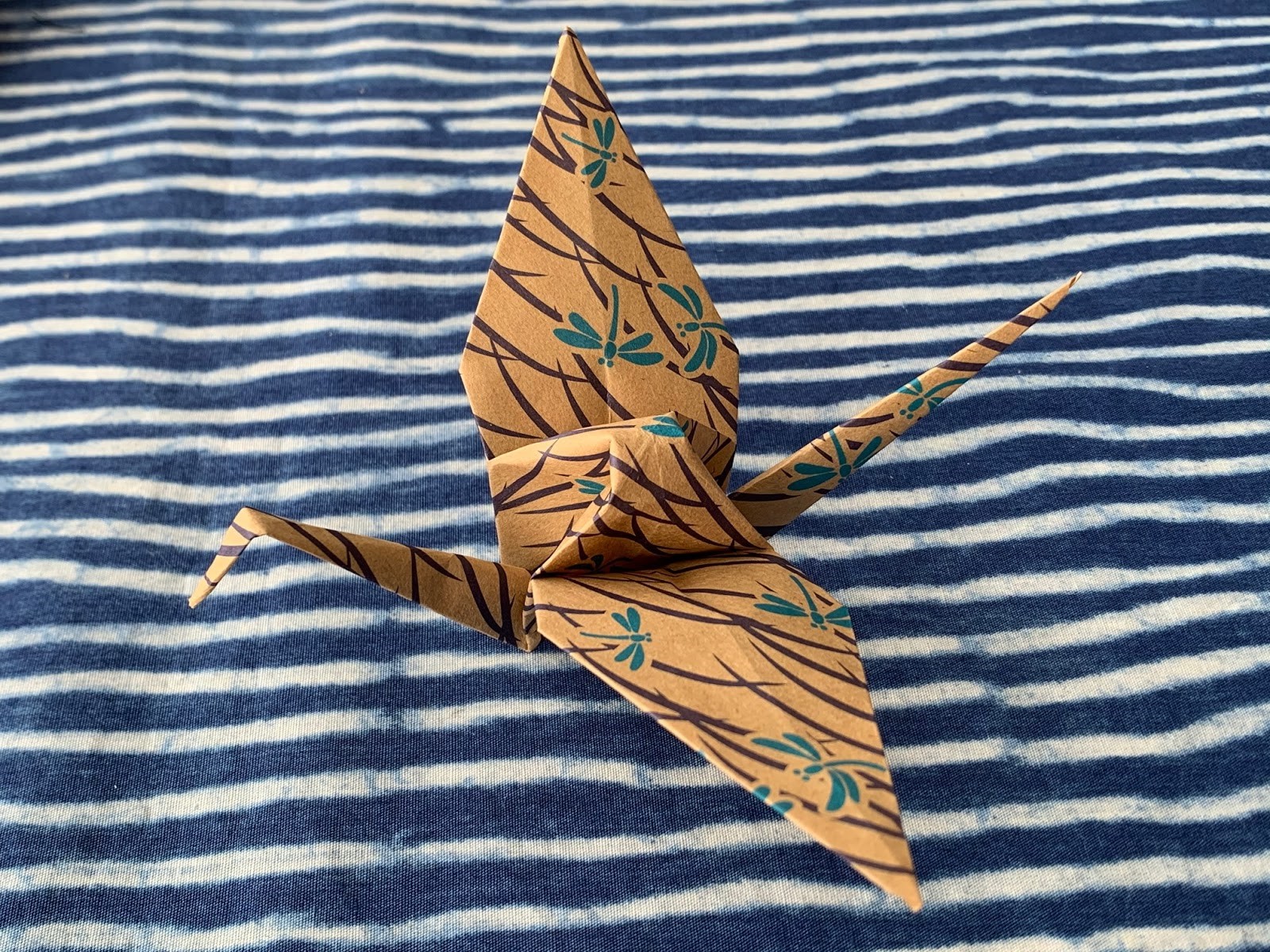Story Power

Dear Mayfield,
Seventy-five years ago today, August 6, 1945, the first atomic bomb was dropped on Hiroshima in Japan. Sadako Sasaki was two years old at the time and living with her family about a mile from Hiroshima’s ground zero. The force of the blast threw her through a window. When her mother found her outside, she seemed to have no apparent injuries. Ten years later, in early 1955 when Sadako was twelve and an accomplished runner in her class at school, she was hospitalized and diagnosed with acute malignant lymph gland leukemia, often called in Japan “atomic bomb disease.” In August of that same year her father told her the Japanese legend about the granting of a wish after you folded 1000 paper cranes. Sadako did fold more than 1000 of them before the end of the month, creatively collecting paper where she could including discarded medical wrappings and paper from the get-well presents of other patients. Following her death on October 25, 1955, her classmates and other children began to raise funds for a memorial to honor her and the many children who died as a result of the atomic bomb. And so, in 1958 a statue of Sadako holding a golden crane was placed in the Hiroshima Peace Park with a plaque that reads: “This is our cry. This is our prayer. Peace in the world.” Since then people around the world have folded cranes and sent them to Hiroshima to be draped around her statue as a cry, a prayer, and a commitment to peace in the world. There is also a statue of Sadako in Seattle’s Peace Park.
In the summer of 1965, ten years after Sadako died, when I was twelve, I bought my first origami paper and a book about Sadako at the Tuttle Company just south of Rutland, Vermont. The Tuttle Company had been founded in Tokyo in 1948 to publish “books to span the East and West.” As a twelve year old, I became an avid folder and since then have folded thousands of cranes, pianos, houses, cups, birds, hats, stars, boxes, and other items. While serving the United Church of Christ in Abington, Massachusetts in the late 1980’s with its 150 children, we developed a unit of study around Sadako’s story and filled two large boxes with folded cranes to be sent to the Hiroshima Peace Park. I still remember when I took them to the post office to be weighed, the person behind the counter asked me if I was sending boxes of air to Japan. The boxes were very light. Sometimes our prayers, our hopes, our commitments, and our stories evoking something vast like peace across the planet appear to bear little weight.
However, there is recent brain research on what happens inside our brains when we tell and hear stories. Stories help us to connect to one another and also enable connections between the left and right sides of our brains. Stories are great tools for remembering and integrating what we are trying to learn. In a July 14, 2020 email from servicespace called “We Were Made For These Times,” an anonymous source has this to say about stories: “Our lives expand — or contract — depending on the stories we tell ourselves, and we get to choose which world we wish to inhabit by becoming conscious of which stories we want to share, amplify and embody each and every day.”
In this week’s web notes we have heard parts of the stories of two children during World War II — Anne Frank and Sadako Sasaki. They are stories of creativity filled with the miraculous energy and even joy of children facing trying circumstances. Anne Frank, age fifteen, died in 1945 in Bergen-Belsen concentration camp . Sadako Sasaki lived through the dropping of the atomic bomb on Hiroshima that same year. These two small stories continue to resonate in our hearts and lives. People in countries all over the globe still read Anne’s diary and still fold paper cranes. Stories that might seed modest and mighty efforts in the direction of a peaceful world expand who we are and what might be possible through us and because of us. All of the limitations of endless pandemic days can only snuff out the expansion and the spaciousness of our lives if we allow that to happen. Much of it depends on the stories that keep us company right now. An appropriate question might be this: Inside what story or stories are you dwelling in this particular present tense?
With peace and love for stories, Martha

